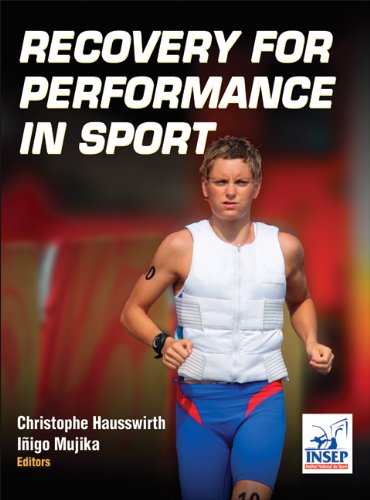

Most ebook files are in PDF format, so you can easily read them using various software such as Foxit Reader or directly on the Google Chrome browser.
Some ebook files are released by publishers in other formats such as .awz, .mobi, .epub, .fb2, etc. You may need to install specific software to read these formats on mobile/PC, such as Calibre.
Please read the tutorial at this link: https://ebookbell.com/faq
We offer FREE conversion to the popular formats you request; however, this may take some time. Therefore, right after payment, please email us, and we will try to provide the service as quickly as possible.
For some exceptional file formats or broken links (if any), please refrain from opening any disputes. Instead, email us first, and we will try to assist within a maximum of 6 hours.
EbookBell Team

4.4
102 reviewsIn today’s competitive sport environment, discovering effective methods of facilitating optimal athletic performance is paramount to success. The recovery period is essential in maintaining athletes’ physical and psychological well-being and crucial in the pursuit of intense physical training and satisfying performances. Recovery for Performance in Sport presents techniques and modalities currently used to enhance athletes’ recovery, optimize training time, and avoid overtraining. Edited by members of l’Institut National du Sport, de l'Expertise et de la Performance (INSEP), Christophe Hausswirth, and Iñigo Mujika, the text encompasses the latest scientific research in the study of recovery and draws from the experience of applied sport scientists working with elite athletes in leading performance and recovery centers. Readers will find proven strategies for enhancing the recovery process and learn the importance of structuring an individualized and evidenced-based recovery plan for improving performance.
Appealing to a broad audience encompassing professionals, athletes, coaches, and students, Recovery for Performance in Sport provides a scientific base of information as well as specific elements that allow for practical application in the real world. More than 30 international professionals contributed to chapter content, including case studies of international athletes and coaches. These case studies complement the scientific explanations by bringing additional context to the discussion of safe recovery modalities and how to apply those concepts to specific sports. Cutting-edge research and techniques allow readers to maximize the recovery of their athletes by learning from the proven strategies of international experts.
Recovery for Performance in Sport is divided into four parts, each presenting scientific knowledge, practical applications, and related case studies. The first two parts focus on the physiology of optimal training, how to prevent overtraining, and how to peak for optimal performance. Part III is a discussion of current recovery modalities along with strategies for optimizing recovery through the combination of modalities. Focusing on recovery at the muscular level, this part discusses nutrition strategies, electrostimulation, compression, massage, and immersion procedures, among others.
Part IV of the text considers situations that offer unique variables to consider when choosing recovery techniques. Differences between men and women in postexercise recovery are detailed along with a current discussion of thermoregulatory responses and adaptations to exercise and heat stress. Consideration is also given to the interventions used to alleviate thermal strain and the limitations of various recovery strategies after exercise in the heat. The physiological responses to altitude exposure and its impact on performance and various factors related to recovery are also discussed along with practical recommendations to facilitate altitude adaptation and recovery.
Recovery is one of the least understood and most under-researched components of the exercise-adaptation cycle. Yet, the importance of the recovery period cannot be overstated considering that athletes spend more time in recovery than in active training and that many adaptations to training take place during the recovery period. The current knowledge and applied information featured in Recovery for Performance in Sport will assist readers in improving the recovery process to help athletes achieve easier adaptation to training loads, lower their risk of overload and injury, and ultimately improve athletic performance.